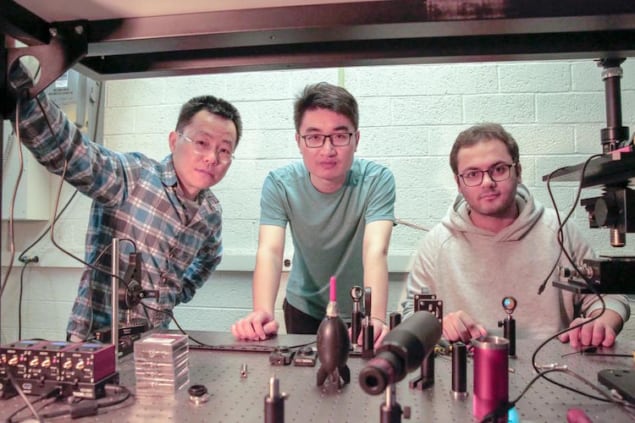
A simple, passive photonic structure made only of glass and air bubbles could perform artificial neural computing for applications in areas like facial recognition. The new proof-of-concept device consumes very little energy and since it distinguishes between different images by distorting light waves, it also works extremely fast.
Artificial neural networks (ANNs) simulate the human brain, which comprises neurons that are connected in a network by synapses. They are very good at learning how to perform a task when provided with many examples of how the task should be completed.
Although ANNs could be used in a host of applications, they do unfortunately require a lot of computing power. Researchers are thus looking for alternative computing methods that are more energy efficient. One promising approach is optical neural computing – an analogue computing technique that requires little energy to work, and which is extremely fast.
Most optical neural computing processors made to date are based on the same architecture as digital ANNs and contain a layered signal feedback network connected via diffraction devices or integrated waveguides. Just like the signals in digital ANN, the signals in optical neural computing pass through optical networks in the forward direction just once, and reflected light propagating in the backward direction is avoided or neglected. However, it is this very reflection that has allowed researchers to miniaturize optical devices, such as laser cavities, photonic crystals, metamaterials and ultracompact beam splitters.
A team led by Zongfu Yu of the University of Wisconsin-Madison thus decided to make use of this optical reflection too to overcome the limitations of layered feed-forward networks and make more efficient artificial neural computing devices. In their nanophotonic neural medium (NNM), light emanating from the object to be imaged enters from the left side of the medium and then focuses to specific spots of different light intensities on the right side. These spots can then be analysed to reconstruct an image of the object.
Glass NNM distinguishes digits
The NNM is made from glass (SiO2) containing numerous sub-wavelength-sized inclusions. These can be bubbles of air, or any other material (for example, graphene) with a refractive index different to the glass, and they strongly scatter light in both the forward and backward directions.
To see if their glass could recognize different images, the researchers tested it on handwritten numbers, from 0-9. Light emanating from an image of a digit enters from one end of the glass and the output waves then focus to 10 specific spots on the other side. Each spot has a different light intensity at its respective location and corresponds to the individual digits.
“We found that the glass was able to detect, in real time, when a handwritten 3 was altered to become an 8,” explains team member Erfan Khoram.
Completely passive computation
The computation is completely passive and intrinsic to the glass, which means that the material could be used hundreds of thousands of times. It also works at the speed of light since it distinguishes between different images by distorting light waves.
“We could potentially use the glass as a biometric lock, tuned to recognize only one person’s face,” says Yu. “Once built, it would last forever without needing power or internet, meaning it could keep something safe for you even after thousands of years.”
The researchers, reporting their work in Photonics Research 10.1364/PRJ.7.000823, say they will now be looking into how different features of their NNM compare to a digital neural network. “We will be studying the shape and size of the medium compared to the depth of the network with different layer sizes,” Khoram tells Physics World, “and how the different types of photonics nonlinearly affect the performance of the neural medium.”

All-optical network mimics the brain’s neurons and synapses
“The true power of this technology lies in its ability to handle much more complex classification tasks instantly without any energy consumption,” says team member Ming Yuan of Columbia University. “These tasks are the key to create artificial intelligence: to teach driverless cars to recognize a traffic signal, to enable voice control in consumer devices, among numerous other examples.”
Unlike human vision, the smart glass could excel in specific applications – for example, one piece of glass for recognizing numbers, a different piece for identifying letters, another for faces, and so on, he adds.
“We’re always thinking about how we provide vision for machines in the future, and imagining application specific, mission-driven technologies,” says Yu. “This changes almost everything about how we design machine vision.”



